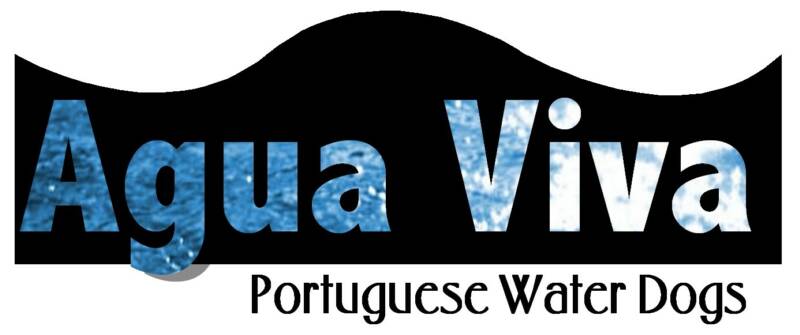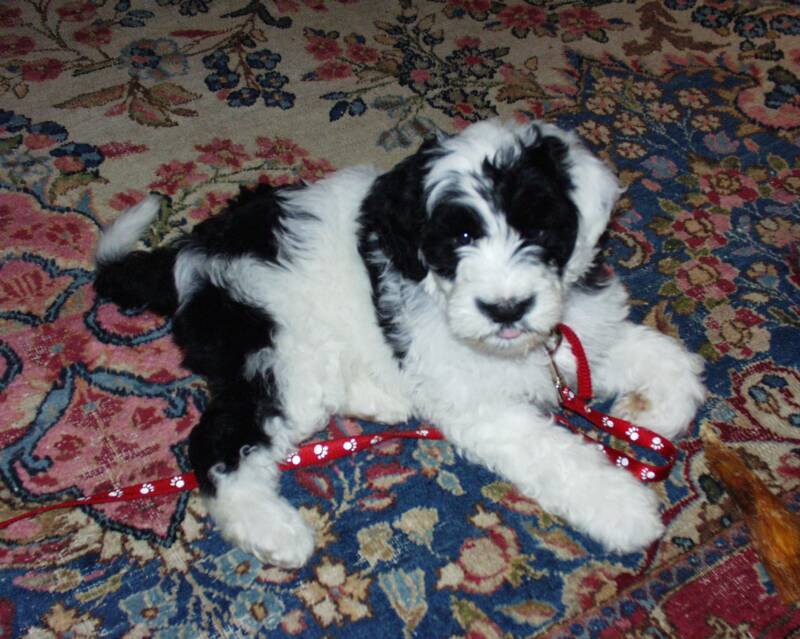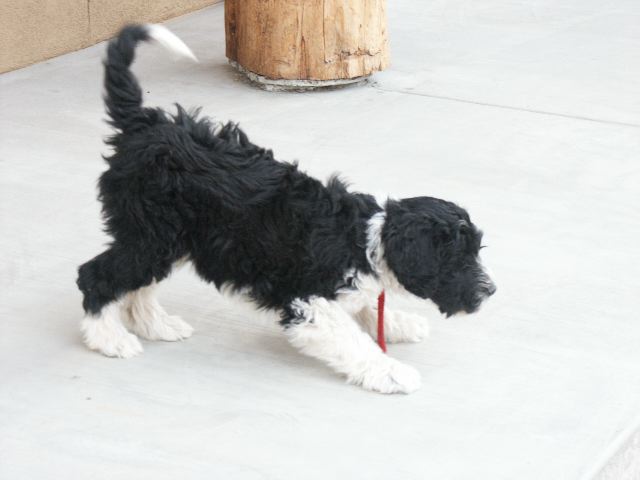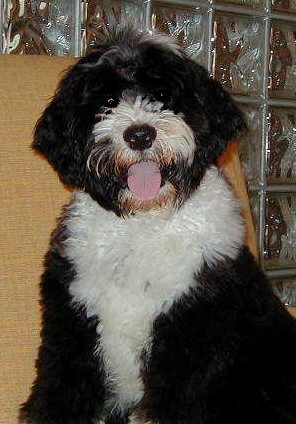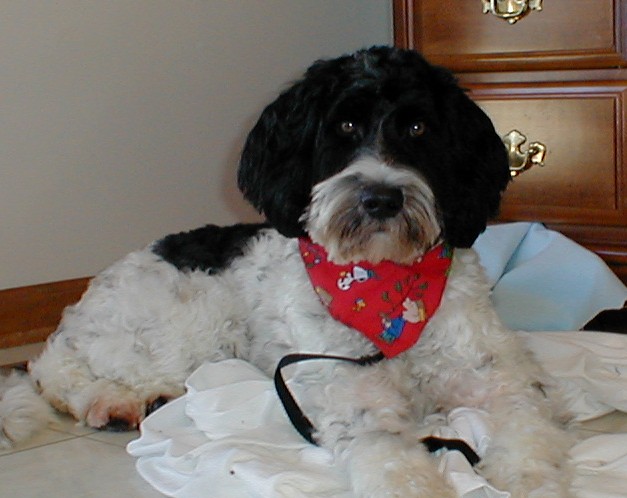Do they shed?
They do not shed very much, but they do shed (all mammals shed at least a little). PWDs, as well as other single-coated breeds (Poodles, Bichons, Kerry Blue Terriers, Wheaten Terriers, to name a few) do not have an undercoat that sheds. That undercoat shedding is what most people with allergies have problems with.
PWDs are hypoallergenic, right?
Portuguese Water Dogs are considered to be hypoallergenic because they are single-coated. To be "hypoallergenic" is to have a decreased tendency to cause allergies. There is no such thing as a non-allergenic dog. Hypoallergenic dog breeds (single coated or hairless) will still produce allergens, but because of their coat type will significantly produce less than others. People with severe allergies and asthma will likely still be affected by a hypoallergenic dog.
If you have severe allergies it is suggested that you spend time with adult PWDS before getting one. Many people are allergic to Portuguese Water Dogs, so be careful. Spend time with the breed before bringing one into your home as a family member.
Are they good with children?
Portuguese Water Dogs get along great with children. You need to remember, however, that dogs are not human. PWDS will often consider a child a canine litter mate and would play harder than they would want; and they play with their mouths. It is important to never let small children be unsupervised with your dog(s).
Can they stay by themselves all day?
PWDS are people-oriented and long to be with their "crewmates" or family. Thus they do not do well in a kennel environment or left alone for long periods of time.
What are the health issues I should be concerned with?
The health issues of greatest concern within this breed include Canine Hip Dysplasia (CHD), Progressive Retinal Atrophy (PRA), Storage Disease (GM-1) and Juvenile Dilated Cardiomyopathy (JDCM).
Please reference the health section of the PWDCA website for more information by clicking here.



